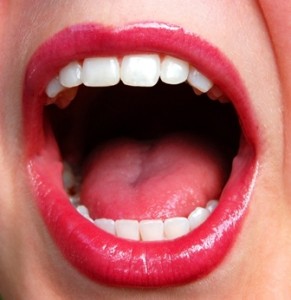 With big family dinners, presents, and cold weather to worry about this holiday season, the last thing you probably have on your mind is the state of your teeth. But what if the worst happens? After all, there are some accidents and injuries you just can’t prepare for. You might be enjoying a hard candy or running down the ice-covered sidewalk when CRACK! Suddenly, you’re experiencing a dental emergency, and in situations like this, time is of the essence. The most important thing to do is to stay calm and not panic. Then, follow these helpful tips below:
With big family dinners, presents, and cold weather to worry about this holiday season, the last thing you probably have on your mind is the state of your teeth. But what if the worst happens? After all, there are some accidents and injuries you just can’t prepare for. You might be enjoying a hard candy or running down the ice-covered sidewalk when CRACK! Suddenly, you’re experiencing a dental emergency, and in situations like this, time is of the essence. The most important thing to do is to stay calm and not panic. Then, follow these helpful tips below:
I knocked my tooth out!
Hold the tooth by the top (the crown section) and gently rinse the root in water if it’s dirty. Don’t scrub it or deliberately remove any of the attached tissue that might still be holding onto it. If it’s possible, set it back into its socket. If it won’t stay, place it in a cup or plastic baggie of milk. Then, contact your local dentist as soon as possible to arrange an emergency dentistry appointment. Make sure to bring the tooth with you to their office! Once you’re there, they’ll be able to let you know whether reattachment is a viable option.
I broke my tooth!
First, rinse your mouth with warm water to clean the area. Cold compresses will help keep the swelling down until you make an dental appointment.
I lost my temporary crown!
Try to find it, if you haven’t lost it! Once you have, dry your natural tooth, place a small dab of toothpaste of top of it, and then carefully reattach the crown. This usually works as a solid temporary solution until you can reach your local dentist.
My tooth really hurts!
First, rinse your mouth thoroughly with warm water. Then, use dental floss to ensure that there are no food particles or debris caught between your teeth that might be causing the pain. Be sure not to place aspirin or any other painkillers against the gums near the aching tooth, as this might cause a burning sensation! If the pain doesn’t go away after these steps, contact your local dentist.
 For those trying to stay healthy around the holidays, you may have already sworn off second or even first helpings from the dessert table. However, there are still plenty of dishes that can cause damage to your waistline and your smile. Many main-course Thanksgiving foods contain high levels of sugar and fat. However, there is some confusion about one in particular.
For those trying to stay healthy around the holidays, you may have already sworn off second or even first helpings from the dessert table. However, there are still plenty of dishes that can cause damage to your waistline and your smile. Many main-course Thanksgiving foods contain high levels of sugar and fat. However, there is some confusion about one in particular. Many of us could use a little pick-me-up in the morning, and coffee is largely the drink we turn to. Sure, it causes tooth stains and bad breath, but go into any Starbucks on your way to work and you’ll see a packed house. But what if I told you that switching from coffee to green tea could help you improve your oral health and reduce your visits to the dentist?
Many of us could use a little pick-me-up in the morning, and coffee is largely the drink we turn to. Sure, it causes tooth stains and bad breath, but go into any Starbucks on your way to work and you’ll see a packed house. But what if I told you that switching from coffee to green tea could help you improve your oral health and reduce your visits to the dentist? Research has shown a link between gum disease and a number of health problems, including diabetes and heart disease. Researchers have also long known about a link between gum disease and rheumatoid arthritis, but they haven’t known why the two were linked. New research is showing why these two inflammatory problems might be connected.
Research has shown a link between gum disease and a number of health problems, including diabetes and heart disease. Researchers have also long known about a link between gum disease and rheumatoid arthritis, but they haven’t known why the two were linked. New research is showing why these two inflammatory problems might be connected. Have you ever noticed that your teeth feel a little…well, fuzzy at the end of the day? What you’re feeling isn’t fuzz, of course, but plaque. You may have heard your dentist talk about plaque before, but do you know what it is?
Have you ever noticed that your teeth feel a little…well, fuzzy at the end of the day? What you’re feeling isn’t fuzz, of course, but plaque. You may have heard your dentist talk about plaque before, but do you know what it is? Ever since Hollywood celebrities started relying on them for transforming their smiles into stunners, porcelain veneers have picked up steam as a truly transformative cosmetic dentistry method that can cover up stains, chips, cracks, and even gaps. These beautiful restorations are handcrafted in dental labs and customized for each unique tooth, ensuring a completely seamless, natural appearance. However, there are also several rumors that dentists have encountered concerning this procedure that may be scaring off potential patients who’re striving for the smile of their dreams. Today, we’d like to clear up five of these misconceptions!
Ever since Hollywood celebrities started relying on them for transforming their smiles into stunners, porcelain veneers have picked up steam as a truly transformative cosmetic dentistry method that can cover up stains, chips, cracks, and even gaps. These beautiful restorations are handcrafted in dental labs and customized for each unique tooth, ensuring a completely seamless, natural appearance. However, there are also several rumors that dentists have encountered concerning this procedure that may be scaring off potential patients who’re striving for the smile of their dreams. Today, we’d like to clear up five of these misconceptions! You may be ready to send your kids back to school, but don’t forget to schedule their dental appointments! It’s easier to bring your children to the dentist when they don’t have to miss class, and it will be less of a hassle for you. Although kids undoubtedly would like to get out of school for their dental visit, protect their wellbeing and education with an earlier trip to the dentist!
You may be ready to send your kids back to school, but don’t forget to schedule their dental appointments! It’s easier to bring your children to the dentist when they don’t have to miss class, and it will be less of a hassle for you. Although kids undoubtedly would like to get out of school for their dental visit, protect their wellbeing and education with an earlier trip to the dentist! dentist if you’re experiencing chronic halitosis (the technical name for bad breath).
dentist if you’re experiencing chronic halitosis (the technical name for bad breath). You might have heard that certain foods or beverages are high in antioxidants, and that antioxidants are good for your health, but do you know why? In today’s post, we offer a brief explanation.
You might have heard that certain foods or beverages are high in antioxidants, and that antioxidants are good for your health, but do you know why? In today’s post, we offer a brief explanation. Children are known for being incredibly stubborn over some issues, and the dentist’s office is one of the most dreaded places for someone with a smile that’s still developing. It’s not that hard to understand – after all, most adults dislike visiting the dentist as well. Still, when a child becomes frightened or anxious about their regular check-ups, it can make it very difficult for them to sit still long enough to receive the crucial care they need to maintain their teeth. Here are some helpful tips for helping your loved one learn to feel comfortable at the dentist’s office:
Children are known for being incredibly stubborn over some issues, and the dentist’s office is one of the most dreaded places for someone with a smile that’s still developing. It’s not that hard to understand – after all, most adults dislike visiting the dentist as well. Still, when a child becomes frightened or anxious about their regular check-ups, it can make it very difficult for them to sit still long enough to receive the crucial care they need to maintain their teeth. Here are some helpful tips for helping your loved one learn to feel comfortable at the dentist’s office: